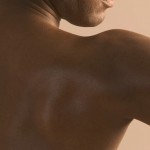 Shoulder Background – what joints make up the shoulder?
Shoulder Background – what joints make up the shoulder?
The shoulder is an area that is susceptible to many injuries. Shoulder movement relies on the integrated motion of several joints;
- Glenohumeral (the ball and socket joint)
- Scapulothoracic (where the shoulder blade moves against the ribcage)
- Acromioclavicular (joint between the collar bone and shoulder blade)
- Sternoclavicular joints (the joint between the collar bone and breast bone)
The shoulder is therefore a lax joint with great mobility. It relies on the joint capsule, ligaments and the slender rotator cuff muscles for stability.
Rotator cuff tear
What is it?
The rotator cuff is made up of four stabilising muscles of the shoulder; supraspinatus, subscapularis, infraspinatus and teres minor. In the majority of cases, it is the supraspinatus muscle that is the main source of pain. Supraspinatus contracts when you bring your arm away from the body. The weakest point of the supraspinatus tendon is about 1cm from where it attaches into the humerus bone at the front and top of the shoulder. It is here where either partial or complete ruptures take place.
Signs and Symptoms
- Depending on the severity of the tear, the patient may report the following:
- Intense pain at the time of injury
- Referral pain down the arm
- Pain also during the night
- Pain is made worse when the arm is raised upwards and externally rotated
- Weakness in the arm
Who gets it and why?
With increasing age and overuse of the joint, degeneration of the tendon sets in, which results in weakness and reduced elasticity of the tendon. People engaging in sports or occupations, that require repetitive overhead movements, are susceptible to this injury. Typcially, the age profile for this injury of clients tends to be 33 years of age upwards.
Diagnosis, Recovery and Prevention
The patient should apply ice to the site at the time of injury, rest and avoid aggravating the injury further and then consult your general practitioner or registered physical therapist for a diagnosis.
Physical therapy treatment will help to restore symmetry between the affected shoulder and the unaffected side. It will also help to reduce tenderness, increase strength and return full range of motion to the shoulder joint.





